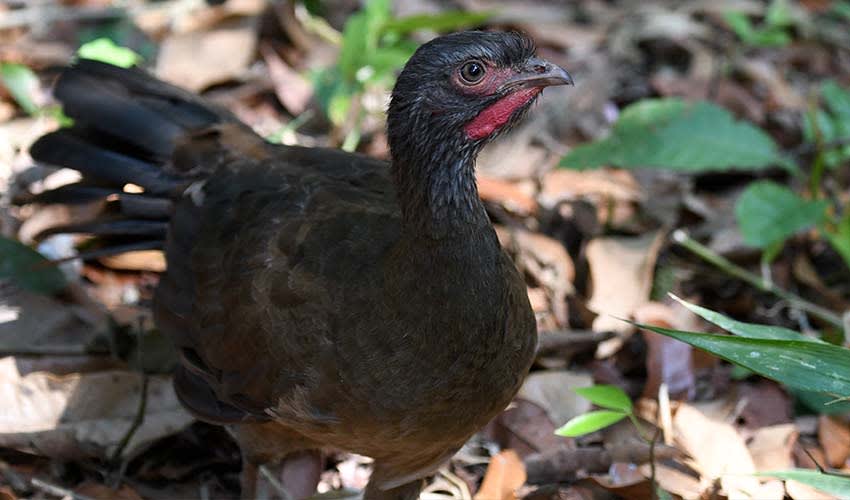Found in the dry forests, scrublands, and savannas of South America’s Gran Chaco region (which stretches across parts of Bolivia, Paraguay, Argentina, and Brazil), this medium-sized bird is best known for its loud, raucous calls, which sound like a chorus of shouting chickens or a rowdy crowd in the trees. In fact, the name “chachalaca” comes from the sound they make: a rough, repeating “cha-cha-LA-ka” that entire groups belt out, especially at sunrise.
At first glance, the Chaco chachalaca may look like a cross between a turkey and a pheasant. It has a slim, chicken-like body, long tail, and a slightly curved beak. Its feathers are mostly dull brown and gray, with a hint of olive, making it blend into the dry forests it calls home. But its most striking feature is its bare red throat patch, especially visible when it’s calling or displaying. While not flashy, the bird’s look is perfectly suited for life in the dense undergrowth where it forages and hides from predators.
What really makes the Chaco chachalaca unique is its social behavior.
These birds live in vocal, noisy groups, often traveling in family flocks of 6 to 12 individuals. They spend most of their time in trees but will come down to the ground to feed, especially in the early morning and late afternoon. Their diet is mostly fruits, seeds, leaves, and flowers, making them important seed dispersers in the Chaco ecosystem. Sometimes, they’ll even eat small insects or snails, especially during breeding season when protein is in demand.
Distribution
 Argentina
Argentina Bolivia
Bolivia Brazil
Brazil Paraguay
Paraguay Uruguay
UruguayAnything we've missed?
Help us improve this page by suggesting edits. Glory never dies!
Suggest an editGet to know me
Terrestrial / Aquatic
Altricial / Precocial
Polygamous / Monogamous
Dimorphic (size) / Monomorphic
Active: Diurnal / Nocturnal
Social behavior: Solitary / Pack / Flock
Diet: Carnivore / Frugivore / Omnivore / Piscivorous / Insectivore
Migratory: Yes / No
Domesticated: Yes / No
Dangerous: Yes / No




